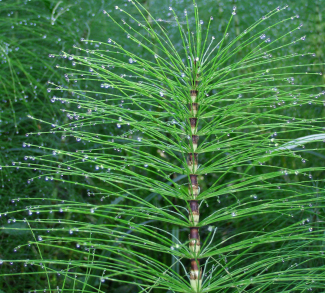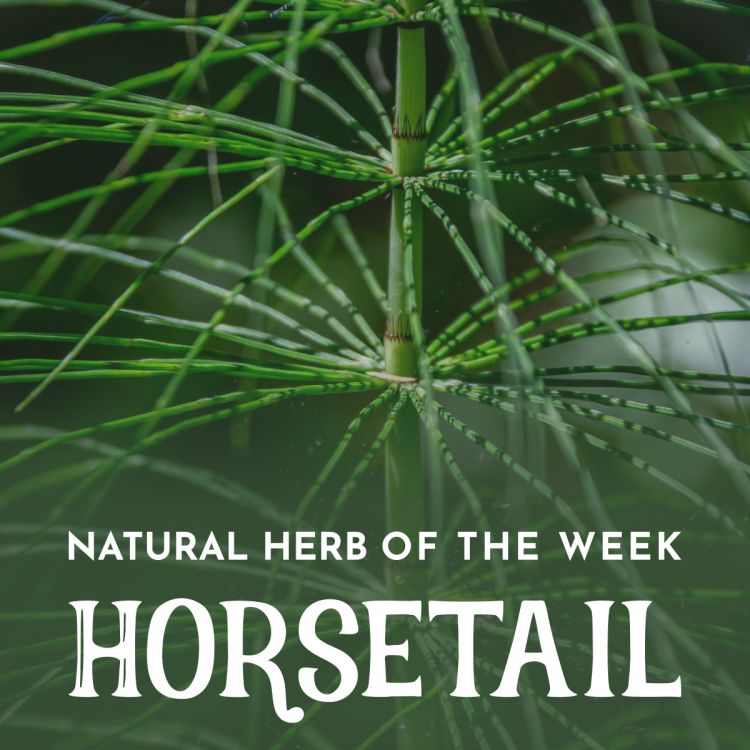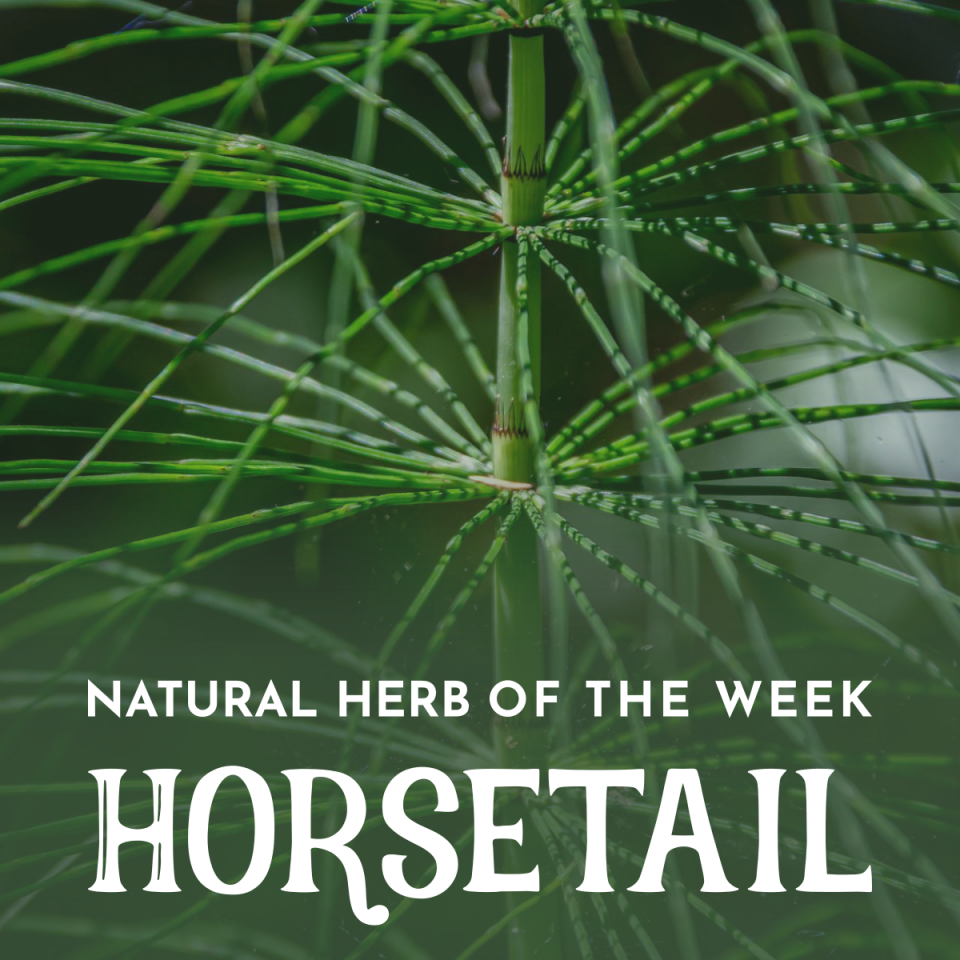I recently had the honor to teach at my local Ladies Homestead Gathering herb walk. It was lots of fun and I enjoyed showing all the ladies some of the natural herbs that grow abundantly in our area. I have so much amazing information about these herbs that couldn’t even fit in, so I’m going to be publishing a series of blogs on each of the herbs we went over during the herb walk.

Horsetail is the only living genus in Equisetaceae, vascular ferns that reproduce by spores rather than seeds.
They usually grow in wet areas and prefer moist soil. Horsetails have segmented stems with rings of long needle-like branches at each joint. They can be found in open fields, ditches, marshes, thickets, degraded areas, and sandy or gravelly soil.
Horsetail is anti-inflammatory, anti-microbial and anti-oxidant. Horsetail has multiple potential health benefits, including bone, skin, hair, and nail health. Horsetail contains high levels of silica, magnesium, potassium, multiple flavonoids, alkaloids, saponins, and various other minerals.
It has also been applied directly to the skin to treat wounds and burns. It has been used for balding, tuberculosis, jaundice, hepatitis, joint diseases, gout, osteoarthritis, frostbite, weight loss, heavy menstrual periods, and uncontrolled bleeding (hemorrhage) of the nose, lung, or stomach.
I use this amazing herb all the time in teas, compress, and in a poultice to treat eczema. Tune in next week to learn about the Plantain herb!

DISCLAIMER: Statements made on this blog regarding natural herbs have not been evaluated by the Food and Drug Administration, as the FDA does not evaluate or test herbs. None of the information in this blog is intended to diagnose, treat, cure or prevent any disease. The suggested uses of botanicals are presented solely for their educational value. Talk with your doctor or healthcare provider before taking or using any herbs.
Horsetail contains a chemical called thiaminase, which breaks down the vitamin thiamine. In theory, this effect could lead to thiamine deficiency.

